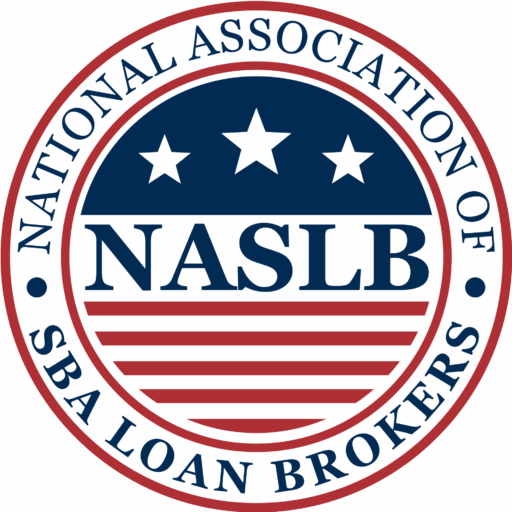October 28, 2025
Bob Coleman
Executive Director, NASLB
Don’t Forget About Fixed SBA 7(a) Interest Rates — In the Broker’s Toolkit

Every SBA broker knows the familiar pattern: your client wants rate stability, the lender wants predictable income, and yet the fixed-rate 7(a) loan — perfectly built for both — often gets overlooked.
The truth is, under the SBA 7(a) Loan Program, both lender and borrower have the right to elect a fixed-rate option, a “hold-in-portfolio” strategy that’s rarely used simply because secondary-market premiums on fixed-rate SBA instruments tend to be depressed. But for a broker who understands how to position it, that same feature becomes a powerful negotiation tool.
At its core, a fixed-rate loan means the interest rate remains constant for the life of the loan. For 7(a) financing, these loans are entirely permissible and governed by SBA regulation, ensuring both borrower and lender understand the maximum allowable rates and the rules that shape the deal.
This is where the broker steps in — connecting the borrower’s long-term goals to the lender’s strategic incentives.
Current Fixed-Rate Caps
For brokers negotiating terms, here are the maximum fixed rates currently allowable under SBA guidance:
- Loans greater than $250,000: maximum fixed rate = 12.25%
- Loans greater than $50,000 and less than or equal to $250,000: maximum fixed rate = 13.25%
- Loans greater than $25,000 and less than or equal to $50,000: maximum fixed rate = 14.25%
- Loans $25,000 or less: maximum fixed rate = 15.25%
These ceilings define the outer limits of the fixed-rate option — but the broker’s skill lies in securing a rate below these caps, using the fixed-rate election as leverage for stability and predictability.
Fixed-Rate Strategy, Structure & Fit
For the SBA lender considering a hold-in-portfolio play, a fixed-rate SBA 7(a) loan can be a deliberate and strategic choice.
By locking in the interest rate, the lender also locks in interest income and payment stability for the entire term of the loan. That predictability is appealing when the lender intends to retain the loan instead of selling it.
In practice, however, fixed-rate 7(a) loans are rarely chosen, because when they’re sold into the secondary market, the premium tends to be depressed due to interest-rate risk and prepayment uncertainty.
That’s where your role as the broker becomes essential: the fixed-rate structure may not fit the lender’s secondary-market sales goals — but it perfectly fits a lender’s internal portfolio strategy, especially for those who value predictable yield and long-term borrower relationships.
Why Fixed Rate?
When the lender chooses a fixed-rate option, the credit memo must explain why. Here’s where your narrative, as the broker, becomes powerful.
One acceptable reason is when the borrower has a clear intent to hedge against rising rates, choosing to lock in fixed costs for the life of the loan.
The borrower’s desire for stability and predictability aligns directly with the lender’s decision to retain the loan in portfolio, rather than sell it. In this way, the loan becomes a symbiotic match — the borrower gets consistent payments, the lender gets consistent income.
Or, another strategic reason: the lender may offer a lower fixed rate today relative to a variable (prime + spread) loan — in exchange for the borrower committing to a fixed rate over the full term.
This is where the broker shines. You can negotiate an initially lower fixed interest rate that remains unchanged for the life of the loan, helping your client manage long-term costs and budget with confidence.
For the lender, that same fixed rate ensures stable portfolio yield and reduced servicing income volatility.
Regulatory Foundation — Maximum Allowable Fixed Interest Rates
This flexibility is backed by federal regulation.
Under 13 CFR §120.213(a), “A loan may have a reasonable fixed interest rate. SBA periodically publishes the maximum allowable rate in the Federal Register.”
The implementing notice (effective August 1, 2022) specifies that for any complete 7(a) loan application, the maximum allowable fixed rate equals the Prime rate in effect on the first business day of the month plus:
(i) 800 basis points (8.00%) for loans of $25,000 or less
(ii) 700 basis points (7.00%) for loans over $25,000 but not exceeding $50,000
(iii) 600 basis points (6.00%) for loans greater than $50,000 up to and including $250,000
(iv) 500 basis points (5.00%) for loans over $250,000
These limits apply to all fixed-rate 7(a) loans, including SBA Express, Export Express, and Community Advantage (but excluding Export Working Capital).
The SBA will continue to publish updates as necessary — ensuring both lender and borrower operate within transparent, predictable boundaries.
A Niche Tool — but a Smart One
Fixed-rate 7(a) loans remain a niche instrument in the SBA lender’s toolkit — but for the broker, they represent an underused opportunity.
They offer predictability for the borrower, income stability for the lender, and negotiating flexibility for you.
For the right borrower and the right lender, connected through an informed broker, the fixed-rate SBA 7(a) loan is more than a compliance box — it’s a win-win relationship built on stability, foresight, and trust.
